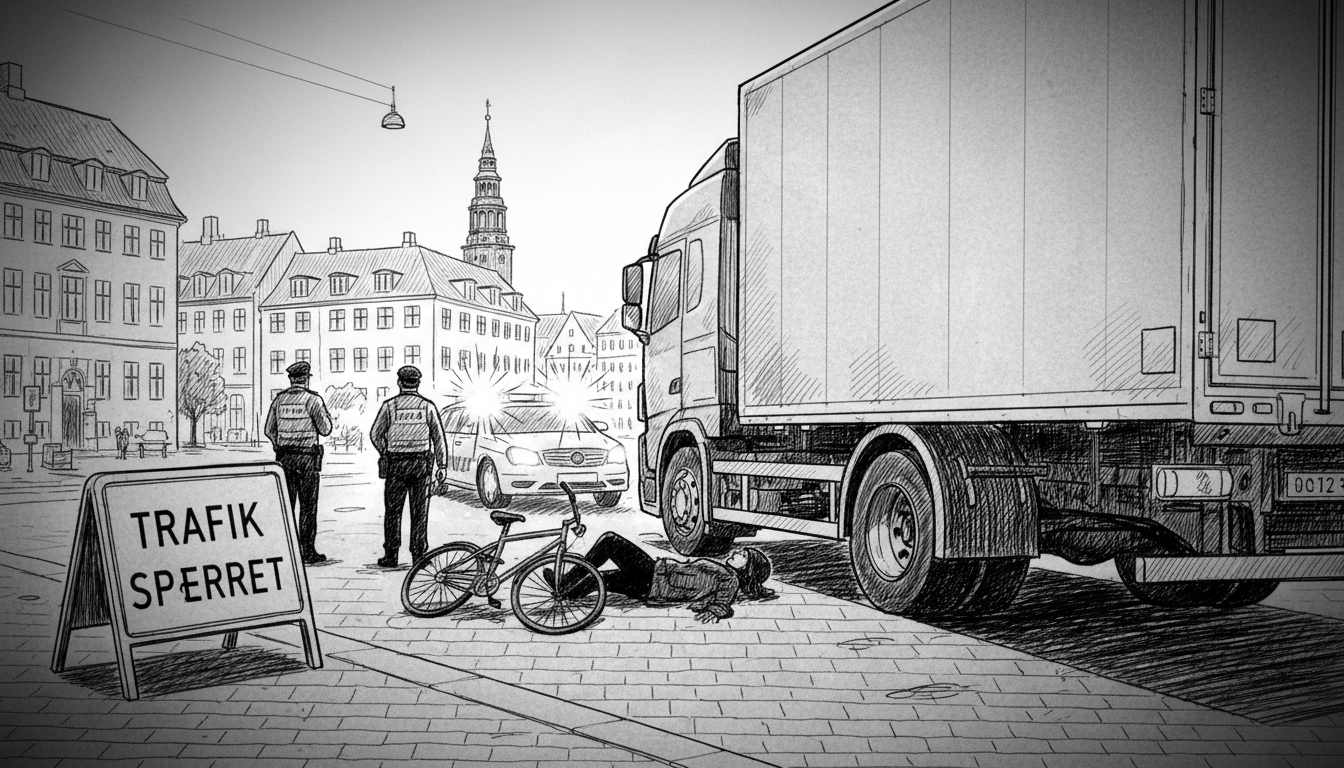A 21-year-old female cyclist died Tuesday morning after a collision with a truck in Copenhagen's Vesterbro district. Police have blocked Stenosgade following the fatal incident that occurred around 10:00 at the intersection with Gammel Kongevej.
Michael Andersen, the police watch commander, confirmed the tragedy involved a right-turn accident between a truck and cyclist. Authorities notified the woman's family about her death. Police described the incident as serious in their social media updates and indicated they would remain on scene with other emergency services for some time.
This latest fatality highlights Copenhagen's ongoing struggle with right-turn accidents involving cyclists and large vehicles. The Road Directorate previously documented 26 fatalities over five years in similar right-turn collisions. A separate survey revealed alarming statistics - 33 percent of respondents reported nearly being involved in right-turn accidents, while one in five drivers admitted almost hitting cyclists when turning right.
Copenhagen's cycling infrastructure faces renewed scrutiny following this tragedy. The city promotes itself as bicycle-friendly with dedicated lanes and urban planning prioritizing cyclists. Yet these recurring right-turn accidents suggest persistent safety gaps where cycling routes intersect with heavy vehicle traffic. The conflict between visibility limitations for truck drivers and cyclists' vulnerability creates deadly combinations at intersections.
Urban planners and traffic safety experts continue debating solutions to protect cyclists. Potential measures include improved mirror systems for trucks, separated traffic signals for cyclists and vehicles, and restricted truck routes during peak cycling hours. Some European cities have implemented physical barriers between cycling lanes and turning vehicles, though Copenhagen's narrower historic streets present design challenges.
The timing of this accident during morning rush hour raises questions about traffic management during peak periods. Many commuters choose bicycles for their daily travel in Copenhagen, creating dense cycling traffic that must coexist with delivery trucks and commercial vehicles. This collision represents the human cost when infrastructure fails to adequately protect vulnerable road users.
Police investigations typically examine vehicle maintenance, driver awareness, cycling behavior, and intersection design following such incidents. Previous right-turn accidents have led to public awareness campaigns about blind spots and defensive cycling techniques. Yet the recurring pattern suggests more fundamental changes to traffic systems might be necessary to prevent future tragedies.
International readers should note that cycling represents a primary transportation mode in Danish cities, with different safety dynamics than in car-dominated urban areas. Copenhagen's high cycling rates mean such accidents impact broader communities and often trigger swift policy responses. This case will likely renew discussions about vehicle design standards, driver training requirements, and infrastructure investments throughout Scandinavian cities.

